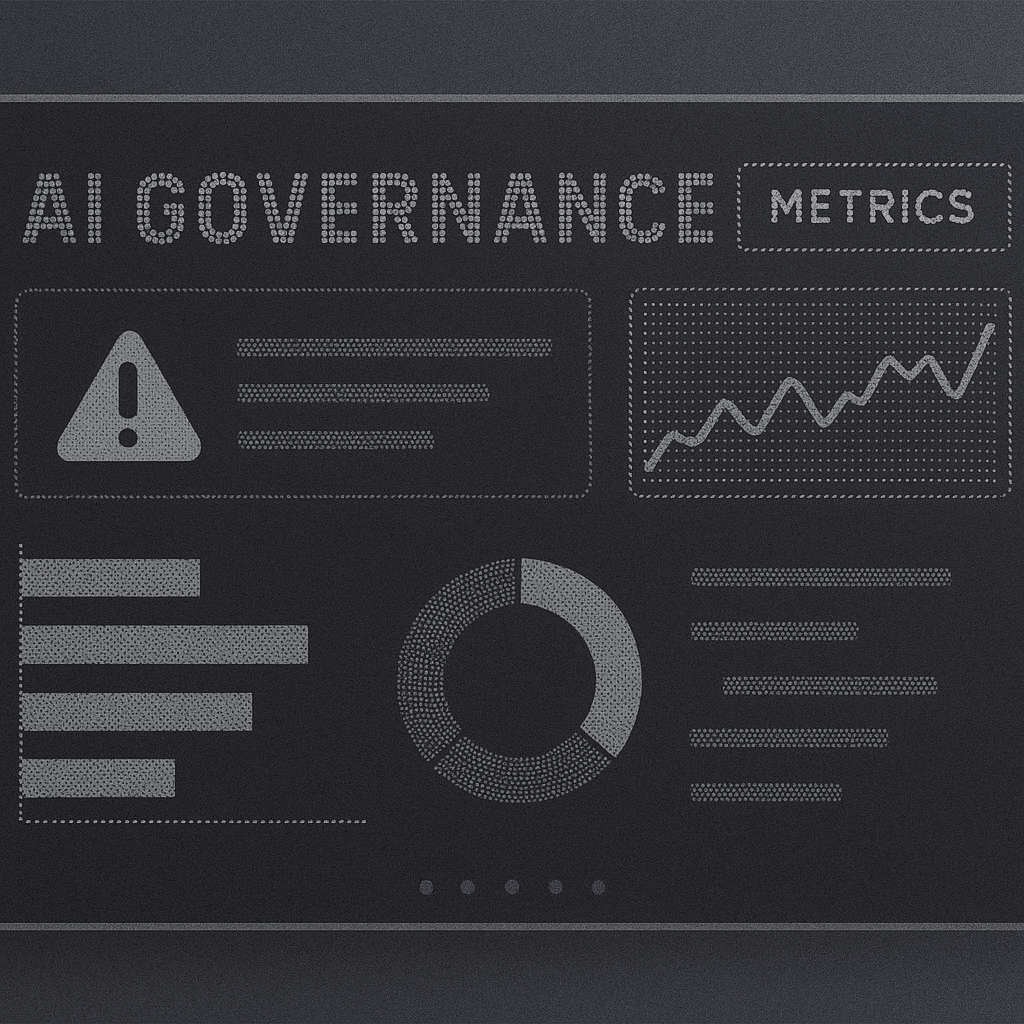TL;DR: Enterprise AI deployments require documented governance frameworks satisfying both SOC 2 Trust Services Criteria and ISO/IEC 42001:2023 requirements. Most organizations attempt dual compliance through separate programs, creating duplicate controls and evidence collection overhead. This guide outlines how to build a unified AI Governance Framework for SOC 2 & ISO 42001 Compliance using integrated control mappings, automated evidence pipelines, and continuous monitoring. Implementation typically requires 3-6 months depending on existing SOC 2 maturity.
Why AI Governance Frameworks Fail in Practice
Compliance officers implementing AI governance frameworks face a specific problem: SOC 2 auditors expect continuous evidence over observation periods, while ISO 42001 certification requires documented management system maturity. Attempting to satisfy both standards through separate programs doubles the evidence collection workload and creates control gaps where mappings don't align.
The failure mode appears during audit preparation. Teams discover they collected SOC 2 evidence that doesn't satisfy ISO 42001's performance evaluation requirements, or built ISO 42001 documentation that lacks the technical detail SOC 2 auditors need. Remediation extends audit timelines and increases certification costs.
Traditional SOC 2 controls address security and availability but don't cover algorithmic bias detection, model drift monitoring, or training data provenance. ISO 42001 requires these AI-specific controls but doesn't specify technical implementation patterns that satisfy SOC 2 auditors. An effective AI Governance Framework for SOC 2 & ISO 42001 Compliance requires unified control architecture from the beginning, not bolt-on mappings added during audit prep.
Prerequisites for Implementation
Before building an AI Governance Framework for SOC 2 & ISO 42001 Compliance, organizations need baseline capabilities. Missing these prerequisites leads to frameworks that can't generate the evidence auditors require.
Executive Alignment: ISO 42001 Clause 5 mandates top management accountability. This requires documented executive sponsor assignment, board-level oversight through Audit or Technology Committee, and clear authority for resource allocation.
Compliance Baseline: Active SOC 2 Type II reporting, documented risk management program, change management processes, and incident response procedures.
AI System Inventory: Complete inventory of model deployments, training data sources, inference endpoints, performance monitoring coverage, and risk classification.
Technical Infrastructure: Continuous monitoring platform, version control for policies, centralized logging, and data governance tooling.
Step 1: Establish Executive Governance Structure
AI Governance Framework for SOC 2 & ISO 42001 Compliance begins with executive-level authority assignment satisfying both ISO 42001 Clause 5 leadership requirements and SOC 2 CC1 control environment criteria.
Effective governance charters document named executives with budget authority, board committee oversight structure, specific AI systems covered, quantified risk appetite thresholds, and escalation procedures for high-risk deployments.
governance_charter: executive_sponsor: role: "CISO" responsibilities: ["Budget allocation", "Board reporting", "Deployment approval"] oversight_committee: name: "Technology & Risk Committee" meeting_frequency: "Quarterly" risk_appetite: algorithmic_bias: threshold: "Demographic parity difference < 0.05" model_drift: threshold: "Performance degradation > 5% from baseline"
Step 2: Build Unified Control Framework
Creating an AI Governance Framework for SOC 2 & ISO 42001 Compliance requires mapping controls between frameworks to eliminate duplication and ensure evidence collected for one standard satisfies the other.
Key Mappings:
- Control Environment (SOC 2 CC1.0 to ISO 42001 Clause 5): Single executive governance charter
- Risk Assessment (SOC 2 CC3.0 to ISO 42001 Clause 6.1.2): Unified AI risk register
- Performance Evaluation (SOC 2 CC7.2 to ISO 42001 Clause 9.1): Continuous monitoring dashboard
- Processing Integrity (SOC 2 PI1 to ISO 42001 A.6.1.2): Model accuracy monitoring
AI-Specific Risk Categories:
- Algorithmic bias with fairness metrics
- Model drift with performance degradation tracking
- Training data privacy with consent management
- Model security with adversarial attack detection
class UnifiedAIControl: def collect_evidence(self): """Single evidence collection satisfying both standards""" return { 'timestamp': datetime.utcnow(), 'soc2_compliance': self.verify_soc2_requirements(), 'iso42001_compliance': self.verify_iso_requirements(), 'automated': True }
Step 3: Implement Policy Stack and Enforcement
An effective AI Governance Framework for SOC 2 & ISO 42001 Compliance requires policies covering the complete AI lifecycle with automated enforcement.
Core Policies:
- AI Acceptable Use Policy with deployment blocking
- Model Development Lifecycle Policy with checkpoints
- Data Governance Policy for training data
- Incident Response Policy for AI-specific scenarios
def validate_ai_deployment(model_metadata): """Enforce acceptable use policy during deployment""" violations = [] if model_metadata['use_case'] in PROHIBITED_USES: violations.append(f"Prohibited use case: {model_metadata['use_case']}") if not model_metadata.get('governance_approval'): violations.append("Missing governance board approval") if model_metadata['risk_level'] == 'high': if not model_metadata.get('bias_evaluation'): violations.append("High-risk model missing bias evaluation") return len(violations) == 0, violationsAutomated evidence collection generates governance meeting minutes, deployment approvals, and policy training completion tracking without manual documentation.
Step 4: Deploy Monitoring and Dashboard
Executive visibility into AI Governance Framework for SOC 2 & ISO 42001 Compliance posture requires real-time dashboards surfacing key metrics and alerting on control degradation.
Dashboard components include compliance posture summary (SOC 2 readiness, ISO 42001 status, open findings), risk visibility (high-risk systems, control failures, emerging risks), operational metrics (performance monitoring coverage, bias detection, drift alerts), and audit preparation status.
class GovernanceDashboard: def get_compliance_summary(self): """Aggregate compliance posture""" total_controls = len(self.compliance_data.get_soc2_controls()) effective_controls = len([c for c in self.compliance_data.get_soc2_controls() if c['status'] == 'effective']) return { 'soc2_readiness': (effective_controls / total_controls) * 100, 'iso42001_maturity': self.calculate_iso_maturity(), 'high_risk_systems': self.get_high_risk_systems(), 'active_alerts': self.get_alerting_summary() }Step 5: Establish Continuous Monitoring
Continuous monitoring forms the foundation of an effective AI Governance Framework for SOC 2 & ISO 42001 Compliance, generating ongoing evidence for both observation periods and performance evaluations.
Monitoring Categories:
Model Performance Monitoring tracks accuracy, precision, and recall continuously. Degradation beyond defined thresholds triggers alerts.
Bias Detection Monitoring evaluates model outputs for discriminatory patterns across protected attributes, providing ISO 42001 fairness evidence while supporting SOC 2 processing integrity controls.
Data Drift Detection monitors input data distributions for shifts impacting model validity.
Security Event Monitoring tracks model access patterns, API authentication, and potential adversarial attacks.
class ModelPerformanceMonitor: def evaluate_performance(self, predictions, actuals): """Continuous performance evaluation""" current_metrics = self.calculate_metrics(predictions, actuals) performance_drift = {} for metric_name, current_value in current_metrics.items(): baseline_value = self.baseline_metrics[metric_name] drift = abs(current_value - baseline_value) / baseline_value if drift > self.drift_threshold: performance_drift[metric_name] = { 'current': current_value, 'baseline': baseline_value, 'drift_percentage': drift * 100 } self.trigger_alert(performance_drift) return current_metrics, performance_driftStep 6: Prepare for Audit
AI Governance Framework for SOC 2 & ISO 42001 Compliance implementation culminates in external audit requiring substantial preparation.
Timeline: 90 days before audit complete internal testing, 60 days before engage auditors for scoping, 30 days before conduct evidence validation, during audit provide requested evidence promptly.
Organizations pursuing both certifications can reduce overhead through unified evidence packages, shared observation periods, and combined management reviews.
Step 7: Maintain Framework Evolution
Effective AI Governance Framework for SOC 2 & ISO 42001 Compliance requires ongoing maintenance as regulations evolve.
Track EU AI Act implementation milestones, U.S. federal AI requirements, and industry standard updates. Conduct quarterly maturity assessments measuring control automation percentage, finding remediation rate, and stakeholder satisfaction. Adapt controls for generative AI, autonomous systems, and federated learning.
Implementation Timeline and Metrics
Building an AI Governance Framework for SOC 2 & ISO 42001 Compliance follows predictable timeline: Months 1-2 establish executive foundation, Months 2-4 develop control framework and policies, Months 4-6 deploy monitoring and automate evidence collection, Months 6+ complete observation period and audit preparation.
Key Performance Indicators:
- Model drift detection rate (target 100% for high-risk systems)
- Bias evaluation frequency (weekly for high-risk models)
- Control automation percentage (target 80%+)
- Audit finding remediation time (under 30 days)
- Policy training completion (100% within 30 days of updates)
Common Implementation Failures
Engineering-Only Ownership: Delegating governance to development teams without executive oversight fails ISO 42001 leadership requirements. Solution: Establish board-level accountability from the start.
Parallel Compliance Programs: Running separate SOC 2 and ISO 42001 initiatives doubles overhead. Solution: Build unified framework from day one.
Manual Evidence Collection: Point-in-time documentation doesn't scale to continuous monitoring requirements. Solution: Automate evidence generation before audit periods begin.
Uniform Control Depth: Applying identical controls to all AI systems regardless of risk wastes resources. Solution: Implement risk-based control tiering.
Building Effective AI Governance
AI Governance Framework for SOC 2 & ISO 42001 Compliance success requires executive commitment satisfying leadership requirements, unified control architecture eliminating duplicate programs, and automated evidence collection supporting continuous monitoring.
Implementation starts with governance charter establishing clear accountability, proceeds through control mapping and policy deployment, and culminates in continuous monitoring providing real-time compliance visibility. Organizations with mature SOC 2 programs can extend existing controls to satisfy ISO 42001 requirements.
The most common failure mode involves treating compliance as documentation exercise rather than operational integration. Effective governance frameworks embed controls in development workflows, automate evidence generation, and provide executives with real-time visibility into AI risk posture.
Implement Compliant AI Development
Augment Code provides ISO/IEC 42001:2023 certified AI coding assistance with automated compliance validation and governance-aware workflows. The platform generates audit evidence automatically, integrates with enterprise security infrastructure, and supports both SOC 2 and ISO 42001 requirements.
Try Augment Code to see how governance-integrated AI development eliminates the manual evidence collection and control mapping overhead that characterizes traditional compliance approaches.
Related Articles
AI Security and Compliance:
- AI Code Security: Risks & Best Practices
- How Can Developers Protect Code Privacy When Using AI Assistants?
- SOC 2 Type 2 for AI Development: Enterprise Security Guide
Enterprise AI Evaluation:
- Enterprise AI Tool Evaluation: Beyond Feature Lists
- Building Business Cases for Enterprise AI Platforms
- How Enterprises Protect IP When Using AI
AI Development Standards:
- Enterprise Coding Standards: 12 Rules for AI-Ready Teams
- AI Code Governance Framework for Enterprise Teams
- HIPAA-Compliant AI Coding Guide
AI Adoption Strategy:
Molisha Shah
GTM and Customer Champion

